Letar du efter de bästa skidorna för dina barn? Så här är det: kortare, lätta skidor gör skidåkning enklare och roligare för nybörjare. Alternativ som Snowfeet MINI KIDS och Snowfeet Skiblades förändrar spelet med kompakta storlekar, portabilitet och möjligheten att använda vanliga vinterkängor – inga dyra pjäxor behövs. De är perfekta för familjer som vill slippa krångel och gå direkt till det roliga.
För mer avancerade unga skidåkare finns traditionella alternativ som Völkl Peregrine Jr, Armada ARJ och Line Bacon Shorty, men de har brantare inlärningskurvor, tyngre utrustning och högre kostnader.
Här är en snabb översikt:
- Snowfeet MINI KIDS: Bäst för nybörjare (3–8 år). Kompakta, lätta att hantera och budgetvänliga för 150 dollar.
- Snowfeet Skiblades: Perfekta för äldre barn (8–14 år) som är redo att ta nästa steg. Lätta, portabla och prissatta till 450–490 dollar.
- Traditionella skidor (som Völkl, Armada, Line): Bättre för skickliga unga skidåkare men tyngre, svårare att transportera och kräver specialpjäxor.
Om du vill ha enkelhet, prisvärdhet och lättanvända produkter är Snowfeet-alternativen vägen att gå.
Hur man väljer de bästa skidorna för barn
1. Snowfeet MINI KIDS (38 cm/15 tum, 50 cm/19,7 tum)
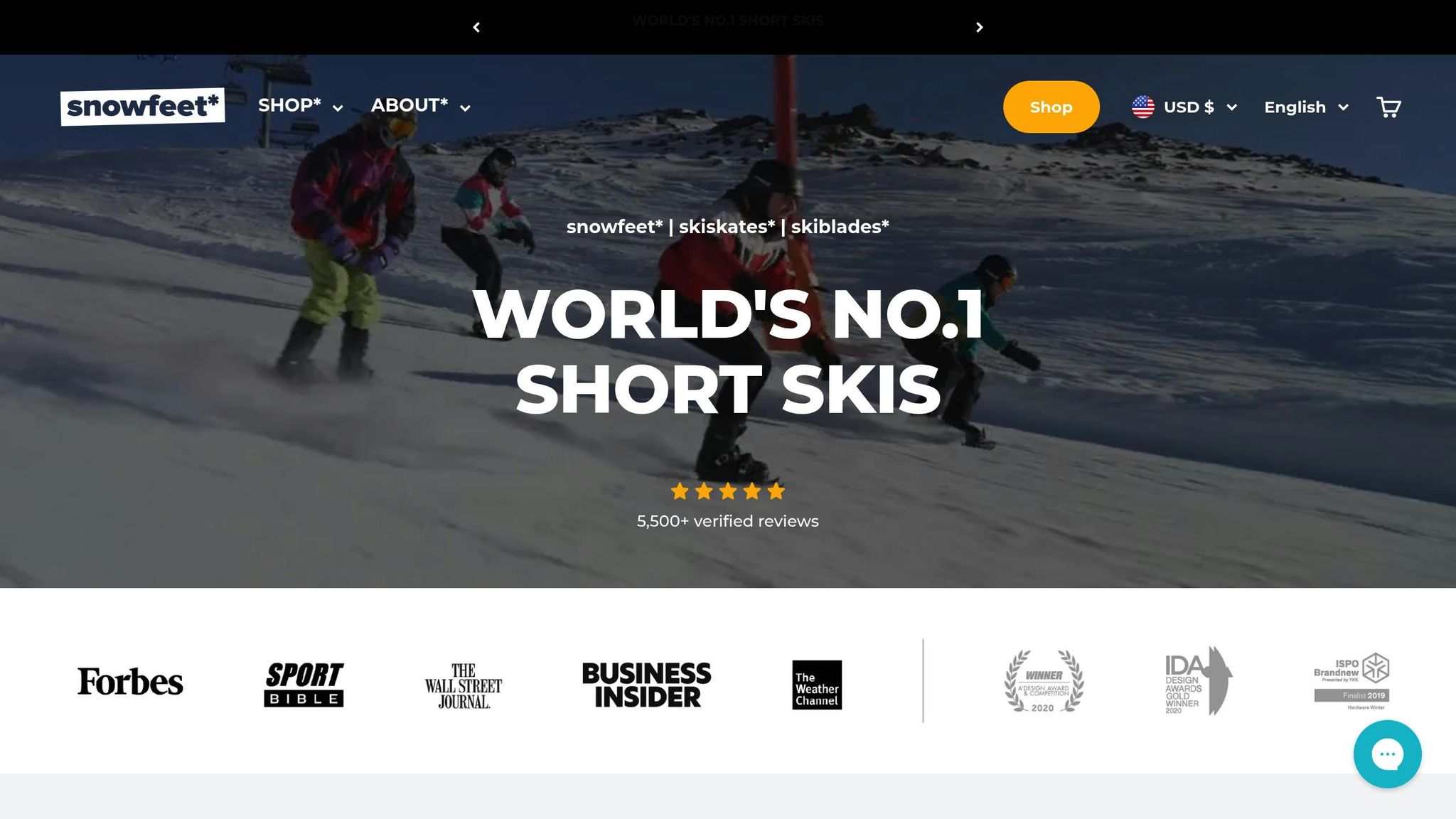
Snowfeet MINI KIDS är ett fantastiskt sätt att introducera barn till vintersporter. Med två kompakta storlekar – 38 cm (15 tum) och 50 cm (19,7 tum) – är de designade för att göra skidåkning roligt och tillgängligt för unga nybörjare.
Längd
Med bara 15 tum och 19,7 tum i längd är dessa skidor mycket kortare än traditionella alternativ. Det gör dem lättare att hantera och mycket mindre skrämmande för barn som precis börjat.
Vikt
Lätta som en fjäder, dessa skidor är perfekta för små händer och växande muskler. Deras lätta design gör det enkelt för barn att bära och hantera dem själva, vilket stärker deras självförtroende redan från början.
Pjäxkompatibilitet
En av de bästa sakerna med Snowfeet MINI KIDS är deras kompatibilitet med vardagsskor. De fungerar med vanliga vinterkängor, vandringskängor och snowboardkängor, och passar storlekar från US Kids 10 till Adult 6 (EU 27–38). Ingen anledning att investera i specialskidpjäxor! Se bara till att kängorna är vattentäta, ger bra stöd för ankeln och sitter tajt i bindningarna för att hålla allt stabilt och säkert. Denna lösning gör det enkelt att komma igång.
Inlärningskurva
Den kompakta designen gör att barn snabbt kan lära sig grunderna – som att röra sig, svänga och stanna. Denna snabba utveckling hjälper till att bygga deras självförtroende och gör hela upplevelsen roligare.
Portabilitet
Glöm att släpa runt på tung och klumpig skidutrustning. MINI KIDS är så portabla att de till och med får plats i en ryggsäck. Det gör dem perfekta för spontana skidutflykter, oavsett om du är på väg till en snowpark, lokala leder eller en familjeutflykt.
Terrängmångsidighet
Dessa skidor är byggda för att ha kul på en mängd olika terränger. Från preparerade backar till snowparker, vandringsleder eller till och med din egen trädgård – de klarar allt. Denna flexibilitet betyder att barn kan njuta av dem hela vintern, oavsett var de är.
Pris
Med start från 150 dollar erbjuder Snowfeet MINI KIDS ett budgetvänligt alternativ till traditionella skiduppsättningar, som ofta kräver dyra tillbehör. De är ett utmärkt sätt att väcka ett barns kärlek till vintersport utan att spräcka budgeten.
2. Snowfeet* Skiblades (65 cm/25,6 tum, 99 cm/39 tum)
De Snowfeet* Skiblades är ett perfekt steg upp för barn som vill utveckla sina skidfärdigheter. Med två storleksalternativ – 65 cm (25,6 tum) och 99 cm (39 tum) – är dessa skiblades lätta och kompakta, vilket gör dem idealiska för unga skidåkare som vill bygga självförtroende samtidigt som de behåller den roliga faktorn. De är designade för att underlätta övergången från nybörjarutrustning till mer traditionella skidor.
Dessa skiblades erbjuder bättre kontroll och anpassningsförmåga när barn utvecklar sina färdigheter, och tar enkelheten hos MINI KIDS och lägger till en prestandaförbättring för en mer dynamisk skidupplevelse.
Längd
Längderna 25,6 tum och 39 tum ger utmärkt stabilitet och kontroll, särskilt för barn som fortfarande utvecklar sin teknik. Traditionella barnskidor tenderar att vara mycket längre, vilket kan göra dem svårare att hantera. 65 cm-versionen är perfekt för yngre barn som går vidare från MINI KIDS, medan 99 cm-modellen passar bättre för äldre barn eller de som är redo att ta sig an mer utmanande terräng.
Vikt
Tack vare deras ultralätta design hjälper dessa skiblades till att minska trötthet och gör det lättare för barn att bära sin egen utrustning. Detta sparar inte bara energi i backen utan uppmuntrar också självständighet och självförtroende.
Pjäxkompatibilitet
En av de bästa funktionerna? Dessa skiblades fungerar med vanliga vinterkängor såväl som skidpjäxor. Det betyder att du inte behöver rusa ut och köpa specialutrustning direkt – barn kan börja med stadiga vinterkängor och uppgradera när de är redo.
Inlärningskurva
Kortare skidor betyder en mjukare inlärningskurva. Med dessa skiblades kan barn snabbt bemästra att svänga och stanna utan att kämpa med klumpig, överdimensionerad utrustning. Det är en självförtroendeboost som gör skidåkningen roligare från början.
Portabilitet
Säg adjö till klumpiga takräcken och överdimensionerade skidväskor. Den kompakta storleken på Snowfeet* Skiblades gör att de enkelt får plats i en bils bagageutrymme eller en sportväska, vilket gör dem perfekta för familjeresor och weekendresor.
Terrängmångsidighet
Dessa skiblades glänser på en mängd olika terränger. 65 cm-modellen är utmärkt för carving på preparerade backar, medan 99 cm-versionen hanterar puder och blandade förhållanden med lätthet. Denna flexibilitet innebär att ett par skiblades kan klara alla slags skidäventyr.
Pris
Prissatta till 450 USD för 65 cm-modellen och 490 USD för 99 cm, erbjuder Snowfeet* Skiblades ett stabilt alternativ till traditionella skiduppsättningar utan att spräcka budgeten. De är en smart investering för växande skidåkare.
3. Völkl Peregrine Jr
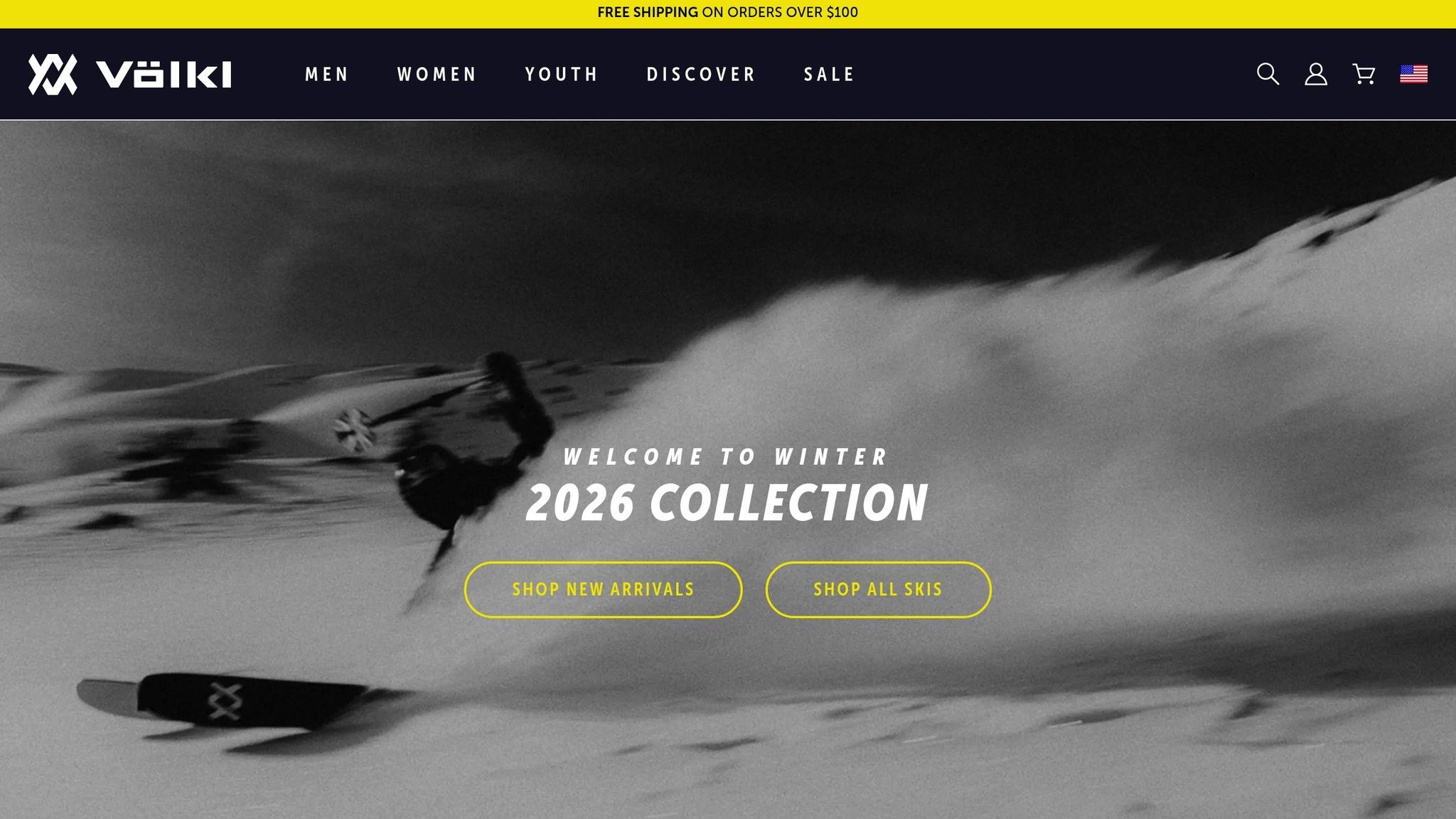
Völkl Peregrine Jr håller sig till en traditionell skidmodell, med längder från 80 cm (31,5 tum) till 160 cm (63 tum). Även om detta passar unga skidåkare kan de längre storlekarna göra det knepigt, särskilt jämfört med Snowfeet*s enkelhet. Dessa skidor riktar sig till nybörjare till medelgoda unga skidåkare, men den extra längden och den mer komplexa uppsättningen kan kännas överväldigande för dem som precis börjat.
Byggd med en kompositkärna, mjuk flex och tip rocker-teknologi är Peregrine Jr designad för att göra svängarna mjukare och mer förlåtande för utvecklande skidåkare. Men de längre dimensionerna medför utmaningar, särskilt för nybörjare som fortfarande lär sig grundläggande tekniker. Denna skillnad understryker kontrasten mellan Peregrine Jrs traditionella tillvägagångssätt och den strömlinjeformade designen hos Snowfeet* utrustningen.
Vikt och längd
Völkl Peregrine Jr skidor väger mellan 2,6 lbs (1 180 g) för 80 cm-modellen och 4,4 lbs (2 000 g) för 160 cm-versionen. Medan dessa storlekar är standard för traditionella skidor kan de vara lite mycket för unga nybörjare. Att svänga och stanna blir svårare med den ökade längden och vikten, vilket kan göra inlärningsprocessen mer frustrerande. Jämfört med detta gör den lätta och kompakta designen hos Snowfeet* produkterna dem enklare att hantera, minskar trötthet och hjälper barn att fokusera på att ha roligt.
Pjäxkompatibilitet
En annan viktig skillnad ligger i pjäxkompatibilitet. Peregrine Jr kräver Alpine (ISO 5355) eller GripWalk (ISO 23223) skidpjäxor. Dessa pjäxor måste professionellt anpassas och justeras, vilket både ökar kostnaden och komplexiteten. Även om funktioner som mjuk flex och tip rocker gör svängarna lite enklare, kräver den längre designen mer avancerade färdigheter, såsom exakt kantkontroll och viktfördelning. Detta gör dem mindre förlåtande för nybörjare jämfört med den intuitiva och nybörjarvänliga Snowfeet* utrustningen.
Portabilitet
Med längder från 80 till 160 cm är Peregrine Jr skidor inte direkt resevänliga. De kräver vanligtvis takräcken, skidfodral eller överdimensionerat bagage för transport, vilket kan komplicera familjeresor eller spontana utflykter. Snowfeet*, med sin kompakta storlek, erbjuder ett mycket enklare alternativ för unga skidåkare på språng.
Terrängmångsidighet
Peregrine Jr är byggd för all-mountain skidåkning och ger stabilitet på olika typer av terräng. Dess längre storlek kan dock vara utmanande för MINI KIDS som fortfarande bygger upp sin styrka och förfinar sin teknik. Snowfeet* utrustning är däremot kompakt och lätt att kontrollera, vilket gör den till ett bättre val för unga nybörjare som experimenterar med olika terränger.
Pris
Völkl Peregrine Jr kostar $229.93 (just nu 18 % rabatt från $279.99). Även om detta verkar rimligt måste du också räkna med kostnaden för specialiserade pjäxor, professionella bindningsjusteringar och regelbundet underhåll. Dessa extra utgifter kan göra den totala investeringen betydligt högre jämfört med de mer prisvärda och okomplicerade Snowfeet* alternativen.
sbb-itb-17ade95
4. Armada ARJ
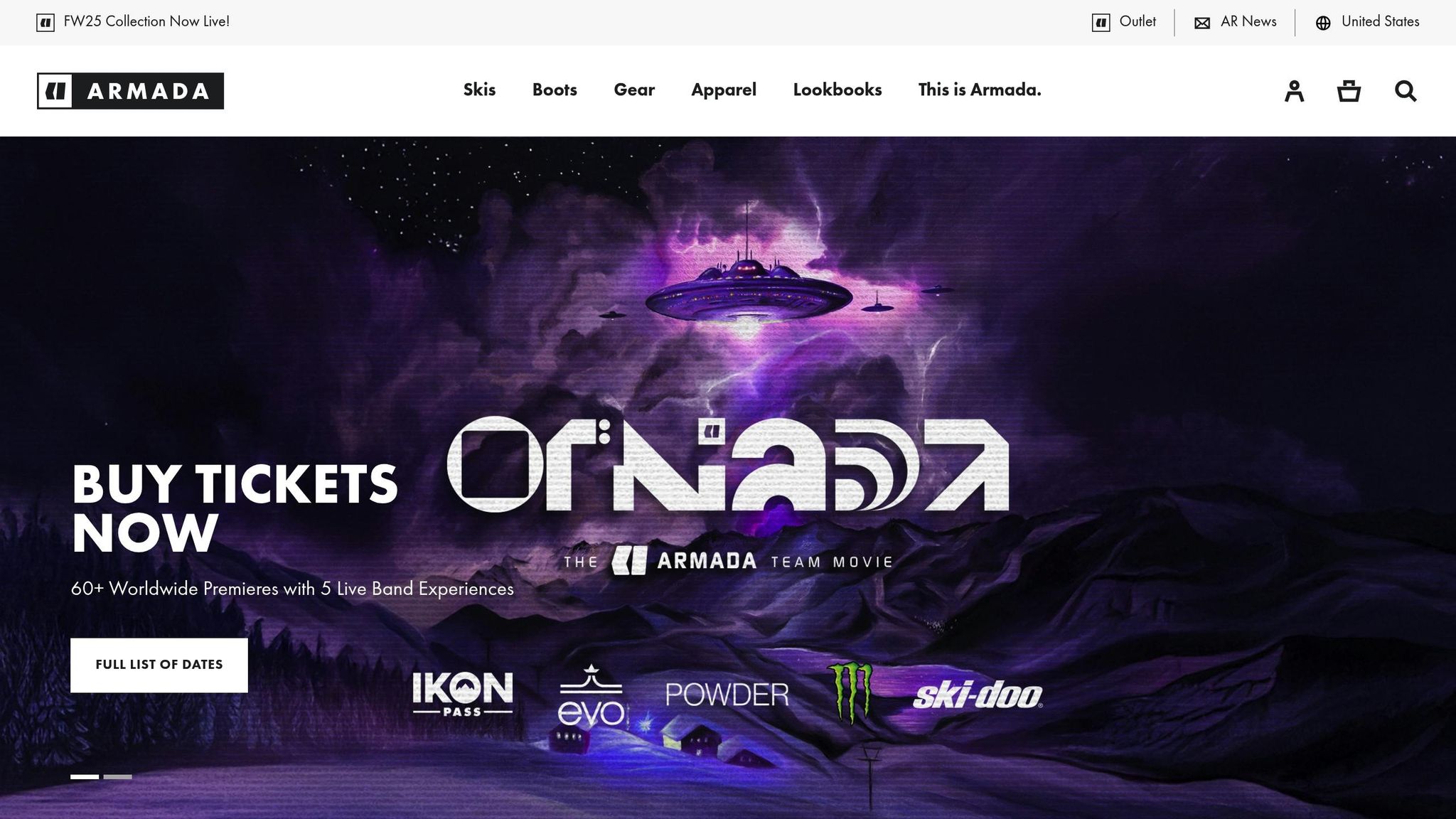
Armada ARJ riktar sig till unga skidåkare med avancerade freeride-ambitioner. Dess längre och robustare konstruktion är designad för att utveckla högre färdigheter, men kan kännas överväldigande för nybörjare som fortfarande behärskar grunderna. För dem som just börjat är Snowfeet* produkternas strömlinjeformade design ofta en mer naturlig passform.
Vikt och längd
ARJ:s tyngre och längre konstruktion kräver mer ansträngning från unga skidåkare. Denna extra tyngd kan trötta ut MINI KIDS snabbare och förkorta deras tid i backen. Snowfeet* utrustning prioriterar däremot lättviktig smidighet, vilket gör det enklare för MINI KIDS att fokusera på att lära sig och ha roligt utan den extra belastningen av tung utrustning.
Pjäxkompatibilitet
ARJ är gjord för användning med traditionella alpina pjäxor, som kräver specialanpassningar och kan leda till löpande kostnader. Snowfeet* utrustning fungerar däremot med vanliga vinterkängor, vilket förenklar installationsprocessen och sparar familjer pengar på extra utrustning.
Inlärningskurva
Även med sin mjukare flex kräver ARJ exakt viktkontroll och en stabil teknik, vilket gör den till ett utmanande alternativ för nybörjare. Snowfeet* produkter, med sin enklare och mer intuitiva design, låter MINI KIDS snabbt lära sig grunderna. Denna användarvänlighet innebär också mindre krångel när det gäller att transportera och hantera utrustningen.
Portabilitet
ARJ:s längre storlek kan göra den svår att transportera och förvara. Familjer kan behöva större skidväskor eller till och med takräcken för att få plats med den. Snowfeet* produkter, som är kompakta och portabla, är mycket lättare att bära, förvara och ta med på spontana familjeresor.
Terrängmångsidighet
ARJ:s twin-tip, all-mountain design är perfekt för erfarna unga skidåkare som är redo att utforska varierad terräng. Men dess längre längd kan kännas skrämmande för nybörjare, särskilt i branta backar eller trånga skidområden. Snowfeet* utrustning erbjuder en mer tillgänglig prestanda, vilket ger barnen självförtroendet att utforska olika terränger i sin egen takt.
Pris
Priset för ARJ kan snabbt stiga när du räknar in kostnaden för specialiserade stövlar, bindningar och regelbundet underhåll. Snowfeet* erbjuder ett mer budgetvänligt alternativ med färre extra kostnader, vilket gör det till ett praktiskt val för familjer som introducerar sina barn till vintersporter.
5. Line Bacon Shorty
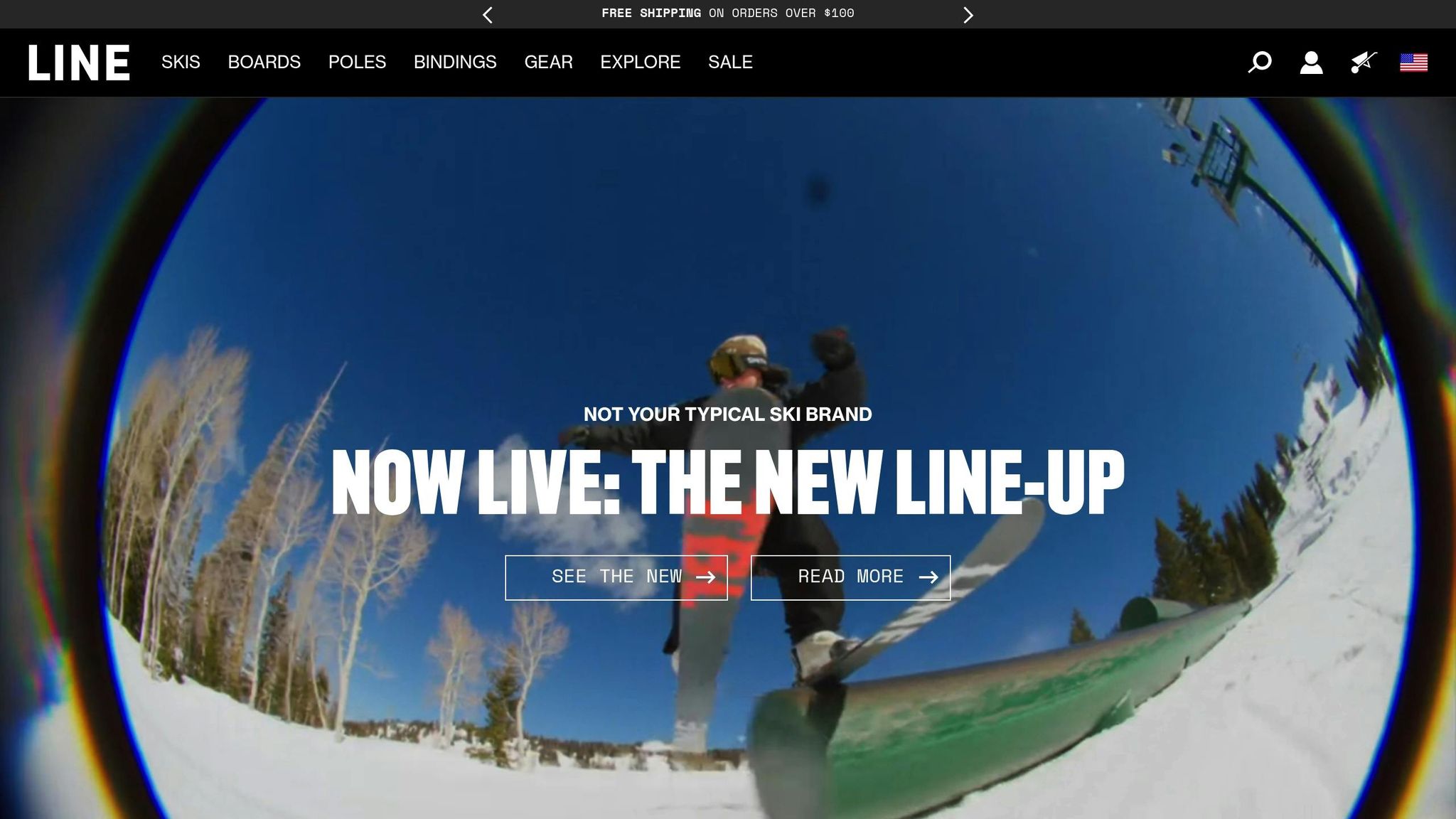
Line Bacon Shorty är ett traditionellt all-mountain skidval designat för juniorer. Men när du jämför med moderna alternativ som Snowfeet* börjar du märka var det kan brista – särskilt för nybörjare som värdesätter enkelhet och användarvänlighet.
Vikt och längd
Med längder från 51 till 59 tum håller Bacon Shorty sig till standardproportioner för skidor. Även om detta fungerar för erfarna unga skidåkare kan det kännas klumpigt och otympligt för dem som just börjat. Snowfeet* tar en annan väg med ultralätta och kompakta designer, vilket hjälper barn att fokusera på att lära sig grunderna utan att tyngas ner av tung utrustning.
Pjäxkompatibilitet
Här är grejen med Bacon Shorty: du behöver specialiserade alpinstövlar och bindningar för att komma igång. Det är ett stort åtagande för familjer som precis börjat med skidåkning. Snowfeet*, å andra sidan, fungerar med vanliga vinterkängor, vilket gör det till ett mycket mer tillgängligt val för nybörjare.
Inlärningskurva
Den traditionella cambern och den riktade designen hos Bacon Shorty kräver avancerade färdigheter som att behärska viktfördelning och kantkontroll. För nya skidåkare kan detta kännas som en brant backe att bestiga – bokstavligt och bildligt talat. Snowfeet* produkter är däremot designade för att vara intuitiva, vilket låter barn snabbt bygga självförtroende och njuta av backarna direkt.
Portabilitet
Att transportera traditionella skidor som Bacon Shorty innebär ofta att hantera klumpiga väskor eller ställ. Snowfeet* utrustning eliminerar detta besvär genom att passa perfekt i en ryggsäck, vilket gör det enkelt för familjer som alltid är på språng.
Terrängmångsidighet
Bacon Shorty är ett utmärkt all-mountain-alternativ för erfarna juniorer, men dess längre längd kan kännas skrämmande i branta backar eller trånga utrymmen. Snowfeet* erbjuder en mer nybörjarvänlig upplevelse som låter nya skidåkare utforska olika terränger utan att känna sig överväldigade.
Pris
Att komma igång med Bacon Shorty innebär en lång lista av kostnader: skidor, bindningar, pjäxor, stavar och löpande underhåll. Snowfeet* förenklar det hela med en mer budgetvänlig lösning som hoppar över behovet av all extra specialutrustning.
Produktjämförelse
När du väljer freeride-skidor för barn finns det några viktiga saker att tänka på: längd, vikt, pjäxkompatibilitet, inlärningskurva, portabilitet och pris.
| Produkt | Längd | Vikt | Pjäxkompatibilitet | Inlärningskurva | Portabilitet | Prisklass |
|---|---|---|---|---|---|---|
| Snowfeet MINI KIDS | 15–19,7 tum | Ultralätt | Vanliga vinterkängor | Nybörjarvänlig | Får plats i en ryggsäck | $150 |
| Snowfeet Skiblades | 25,6–39 tum | Lättviktig | Vinter-/snowboardpjäxor | Lätt till måttlig | Kompakt design för transport | $450–$490 |
| Völkl Peregrine Jr | 31–51 tum | Måttlig | Endast alpina pjäxor | Måttlig till avancerad | Kräver skidväska | $300–$400 + bindings |
| Armada ARJ | 35–55 tum | Tung | Endast alpina pjäxor | Avancerad | Traditionell skidtransport | $350–$450 + bindings |
| Line Bacon Shorty | 51–59 tum | Tung | Endast alpina pjäxor | Avancerad | Krymmande transport | $400–$500 + bindings |
Låt oss bryta ner det här. Snowfeet-produkter sticker tydligt ut av några anledningar.
Pjäxkompatibilitet
Till skillnad från traditionella skidor som kräver dyra alpina skidpjäxor, fungerar Snowfeet-utrustning med vanliga vinterkängor eller snowboardpjäxor som de flesta familjer redan har. Detta eliminerar behovet av extra inköp och sparar pengar från början.
Portabilitet
Traditionella skidor är otympliga och kräver en skidväska för transport. Snowfeet är däremot tillräckligt kompakta för att få plats i en ryggsäck eller sportbag. Det gör dem perfekta för familjer som vill hålla det enkelt och resa lätt.
Inlärningskurva
För nybörjare kan den branta inlärningskurvan för traditionella skidor vara en utmaning. De kräver ofta att man behärskar avancerade tekniker innan barn kan njuta fullt ut av backarna. Snowfeet-utrustning förändrar det. Barn kan spänna fast dem och börja ha roligt direkt, samtidigt som de bygger självförtroende när de leker.
Vikt
Tunga skidor kan snabbt trötta ut barn, vilket förkortar deras tid i snön. Snowfeets ultralätta design håller deras ben fräscha, så att de kan leka längre utan att bli utmattade.
Mångsidighet
Snowfeet-produkter är inte bara för preparerade backar som många junior-skidor. De klarar av backar, parker, vandringsleder och till och med din trädgård. Denna mångsidighet innebär att barn kan njuta av dem i olika miljöer, inte bara i skidbacken.
Kostnad och underhåll
Traditionella uppsättningar kommer med en lång lista av extra saker – bindningar, pjäxor, stavar – och de kostnaderna kan snabbt bli höga. Dessutom, när barn växer, krävs regelbundna uppgraderingar och underhåll. Snowfeet eliminerar behovet av all den extra utrustningen, vilket gör dem till ett mer budgetvänligt alternativ på lång sikt.
För familjer som söker något enkelt, roligt och kostnadseffektivt, uppfyller Snowfeet alla kriterier. Barn kan spänna fast dem och komma igång på några minuter, utan krångel med traditionella uppsättningar. Oavsett om ni ska till backarna eller bara leka i trädgården, erbjuder Snowfeet ett problemfritt sätt att njuta av snön.
Slutliga rekommendationer
Välj det bästa alternativet baserat på ditt barns färdighetsnivå och hur enkelt du vill att det ska vara. Här är en snabb guide för att hjälpa dig bestämma:
För nybörjare (3–8 år):
Kolla in Snowfeet MINI KIDS (15–19.7 in). De är idealiska för yngre barn, erbjuder kompatibilitet med vanliga vinterkängor, enkel hantering och ett budgetvänligt pris på runt 150 dollar. Dessutom gör deras kompakta storlek dem superlätta att packa för familjeutflykter, vare sig det är en dag vid den lokala pulkabacken eller ett helgäventyr på skidor.
För äventyrliga barn (8–14 år):
Snowfeet* Skiblades (25.6–39 in) är ett utmärkt val för äldre barn som vill ta sitt åkande till nästa nivå. De ger bättre stabilitet och är fortfarande lätta att lära sig på. Oavsett om ditt barn är ivrigt att utforska preparerade backar, experimentera med parkfunktioner eller öva carving, levererar dessa skiblades. Bonus: de fungerar med snowboardpjäxor, vilket kan spara dig från att behöva köpa dyr alpinutrustning.
Om bekvämlighet är högst på din lista:
Båda Snowfeet-alternativen är otroligt portabla och mångsidiga, fungerar bra på allt från bakgårdsbackar till fullstora skidbackar. De låter dig slippa krångel och kostnader för specialutrustning.
Traditionella uppsättningar? Endast för avancerade skidåkare.
Om inte ditt barn är mycket skickligt och behöver specialiserad prestanda, kanske traditionella skiduppsättningar inte är värda den branta inlärningskurvan och de högre kostnaderna för de flesta familjer.
Vanliga frågor
Vad gör Snowfeet-produkter bättre för MINI KIDS jämfört med traditionella skidor?
Snowfeet-produkter är ett utmärkt val för MINI KIDS eftersom de är lätta, kompakta och superlätta att hantera. Detta gör att lära sig åka skidor inte bara blir säkrare utan också mycket roligare. Till skillnad från traditionella skidor som kan kännas klumpiga och svåra att kontrollera, hjälper Snowfeets kortare design MINI KIDS att få självförtroende i backen utan att känna sig överväldigade.
De är också otroligt mångsidiga, presterar bra i olika snöförhållanden samtidigt som de hjälper MINI KIDS att förbättra balans och koordination. För nybörjare är detta en win-win. Jämfört med traditionella längre skidor från märken som Rossignol eller Atomic, utmärker sig Snowfeet som ett mer portabelt och nybörjarvänligt alternativ, samtidigt som det håller glädjefaktorn hög för unga skidåkare.
Anpassar sig Snowfeet-produkter efter MINI KIDS växande fötter, eller behöver de ofta bytas ut?
Snowfeet-produkter levereras med justerbara bindningar och olika monteringsalternativ, vilket gör dem kompatibla med en rad olika fotstorlekar. När dina MINI KIDS växer betyder dessa funktioner att du inte behöver köpa ny utrustning hela tiden, vilket är en vinst för både plånboken och schemat.
Denna flexibilitet gör Snowfeet till ett praktiskt, långsiktigt alternativ för MINI KIDS som älskar utomhusäventyr. De är byggda för att växa med ditt barn och följa deras ständigt föränderliga behov.
Kan Snowfeet-utrustning hantera olika typer av snö, och hur står den sig jämfört med traditionella skidor för MINI KIDS och nybörjare?
Snowfeet-utrustning fungerar utmärkt på alla typer av snö. Dess korta längd och rocker-design låter den glida smidigt över pudersnö, ta sig an ojämn terräng utan problem och hantera preparerade backar med precision. Detta gör den till ett stabilt val för MINI KIDS och nybörjare som provar olika snöförhållanden.
Till skillnad från traditionella skidor är Snowfeet-utrustning lättare, mindre och enklare att kontrollera – perfekt för yngre eller mindre erfarna användare. Medan vanliga skidor kan vara bättre för avancerade skidåkare som jagar hastighet och stabilitet, glänser Snowfeet med sin portabilitet, snabba svängar och ren glädje, vilket gör det till ett fantastiskt val för MINI KIDS som börjar sina freeride-äventyr.

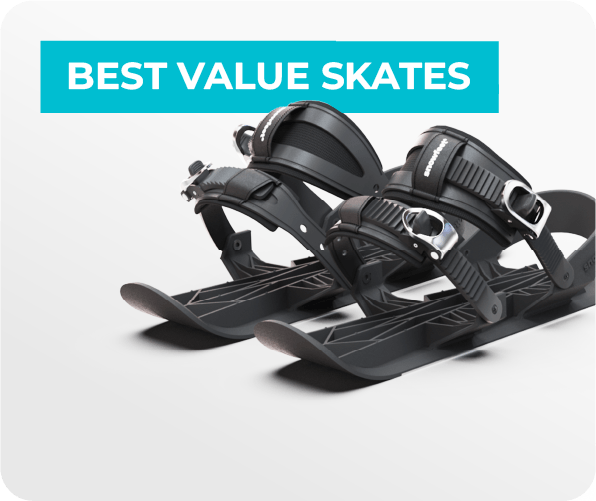



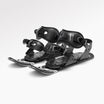
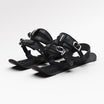
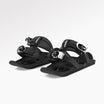
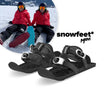
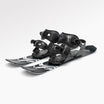
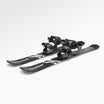

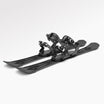
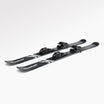
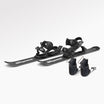





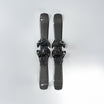
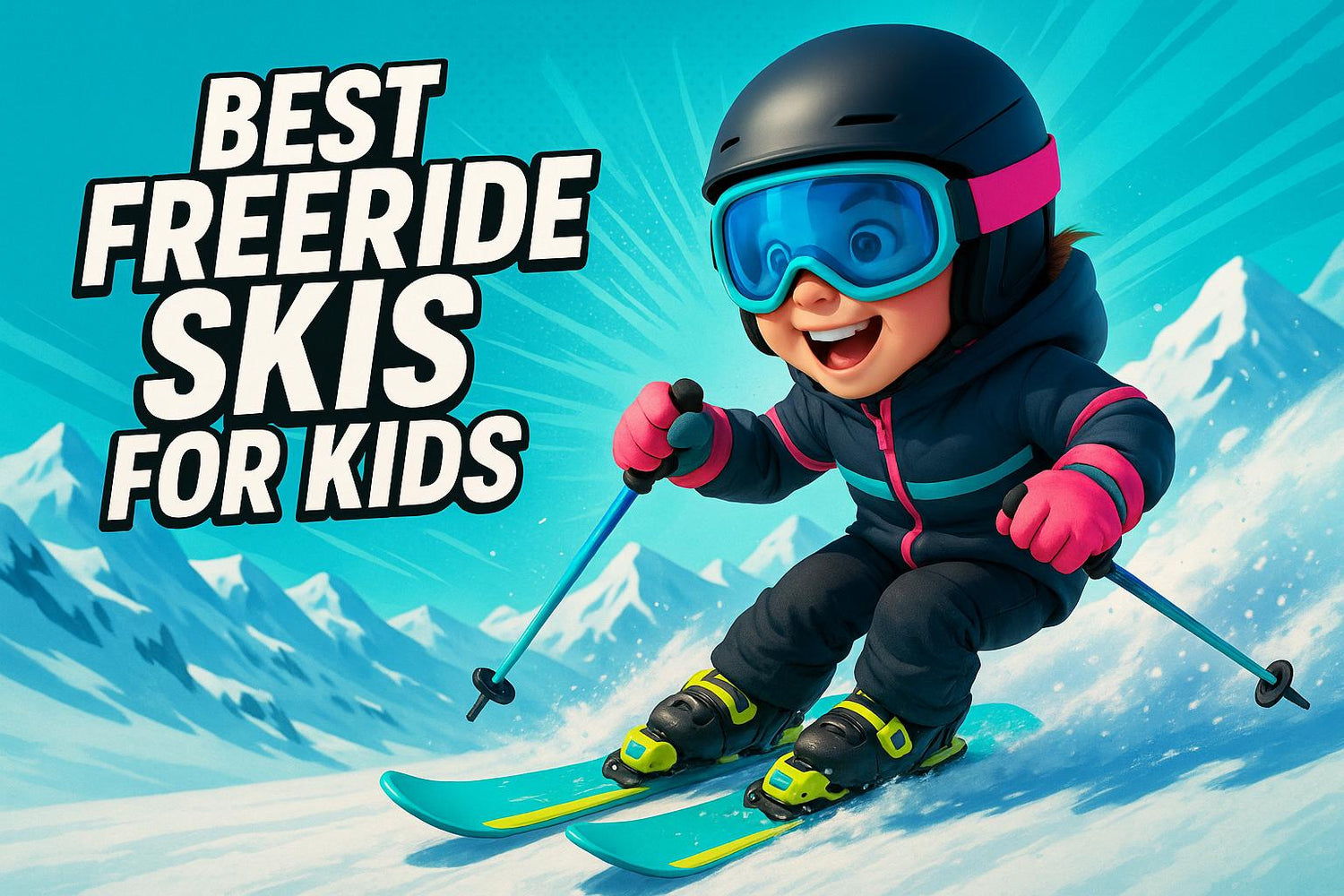
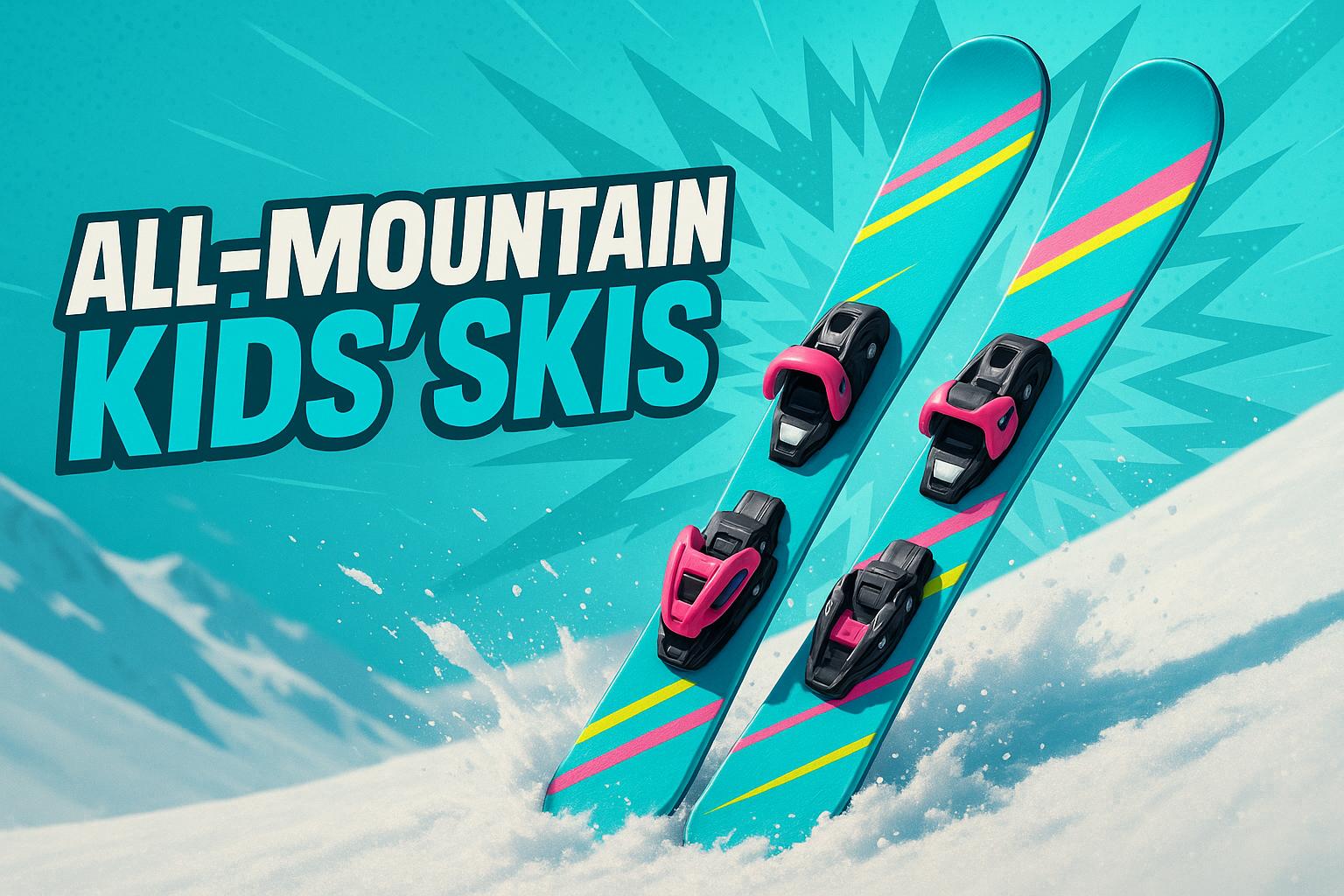
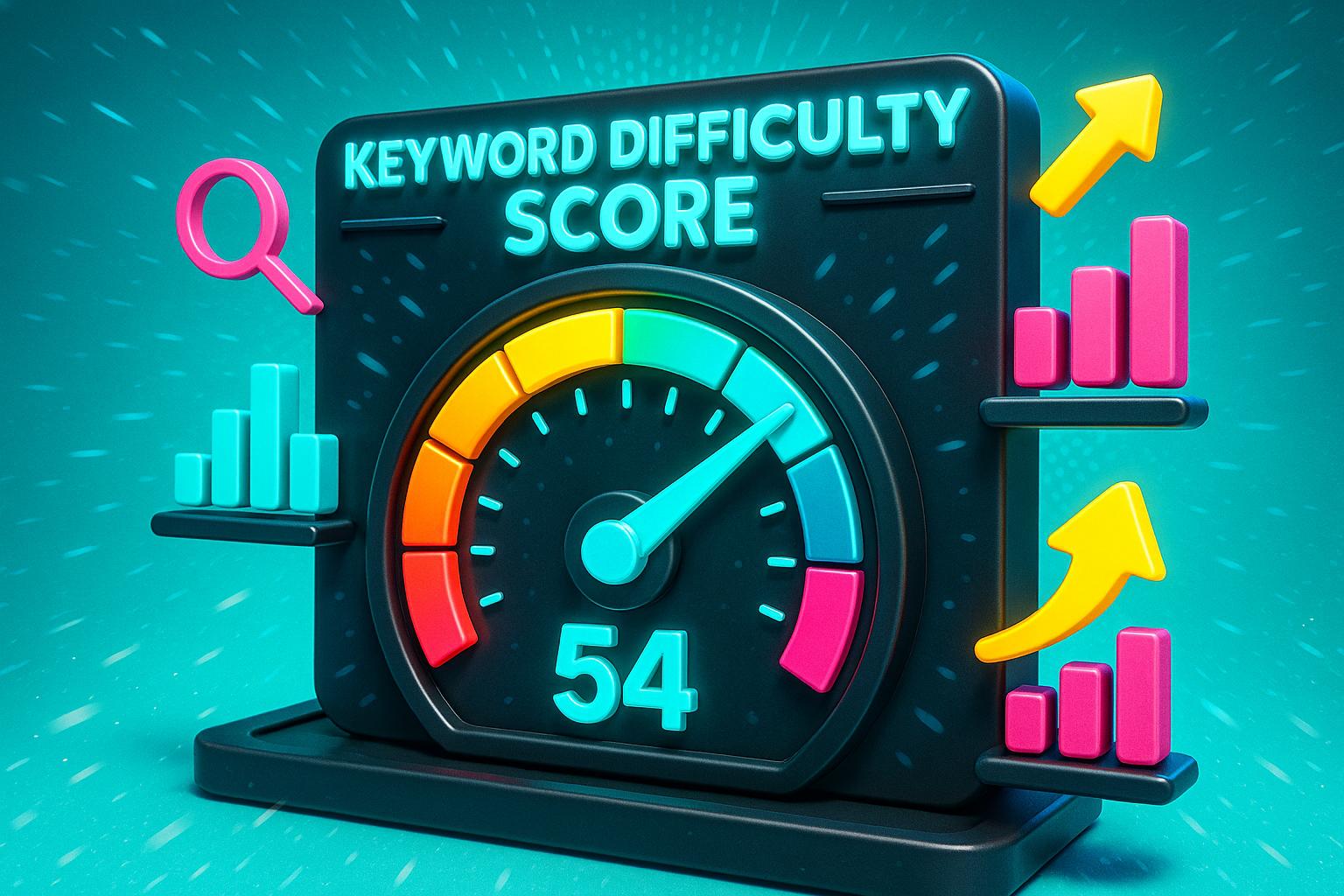
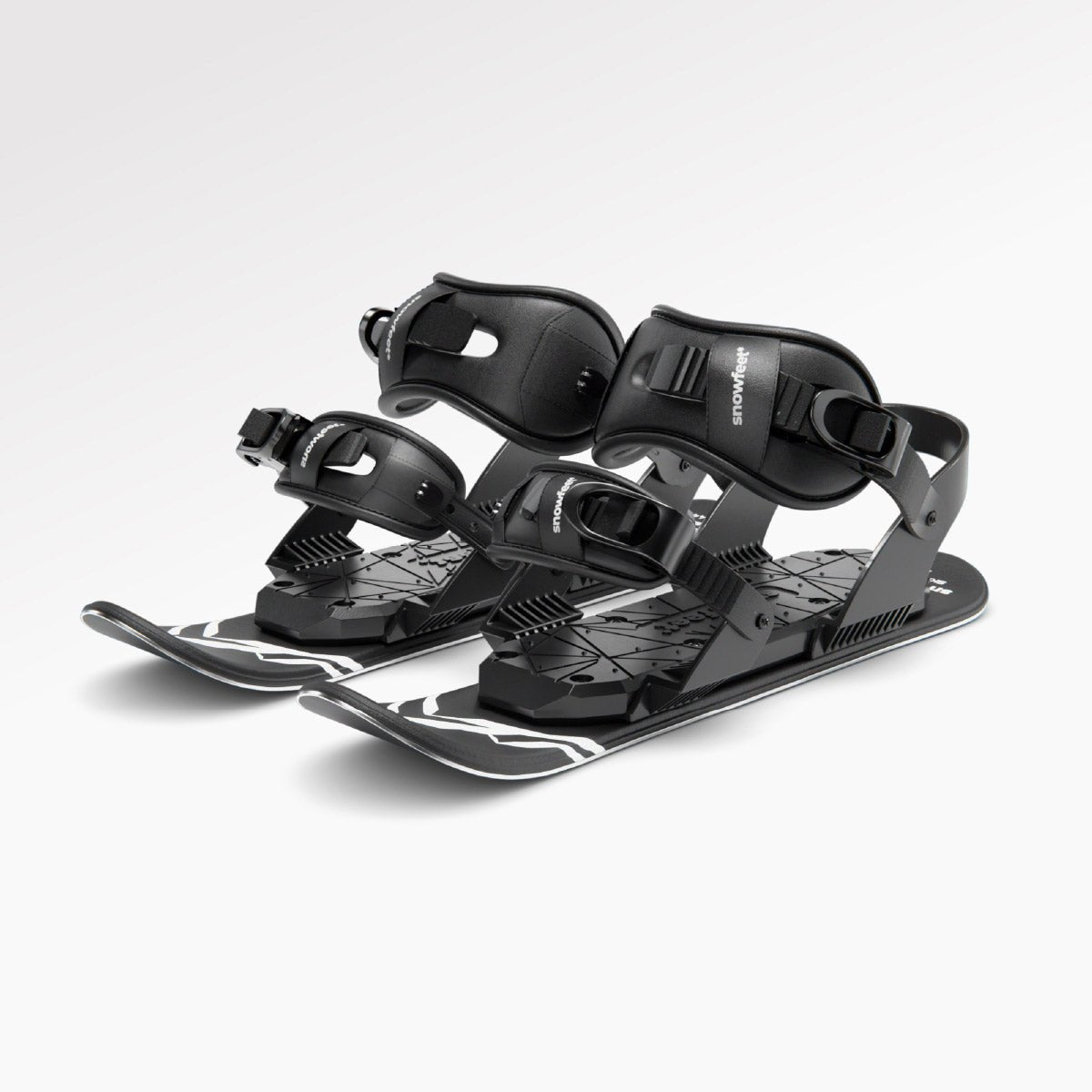

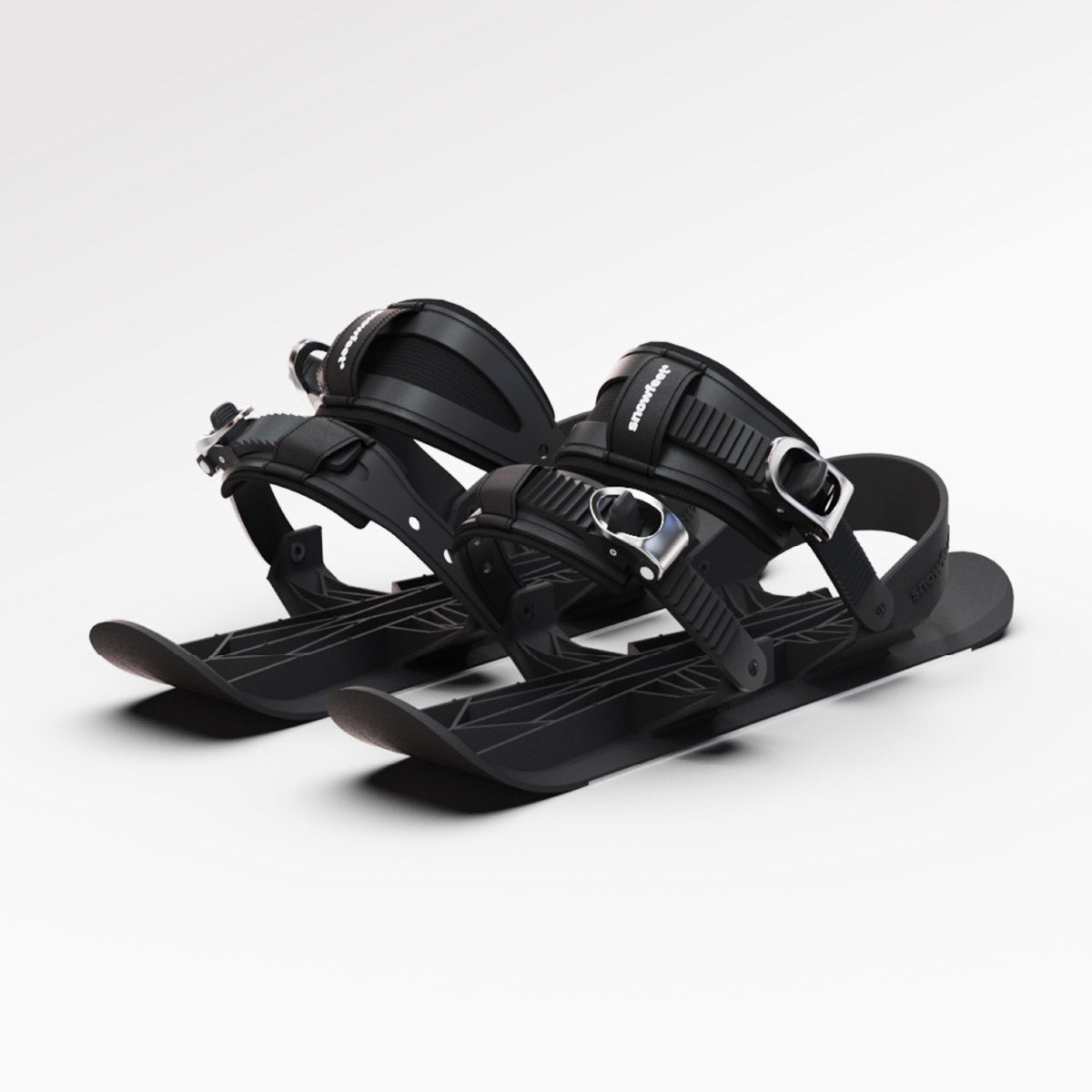
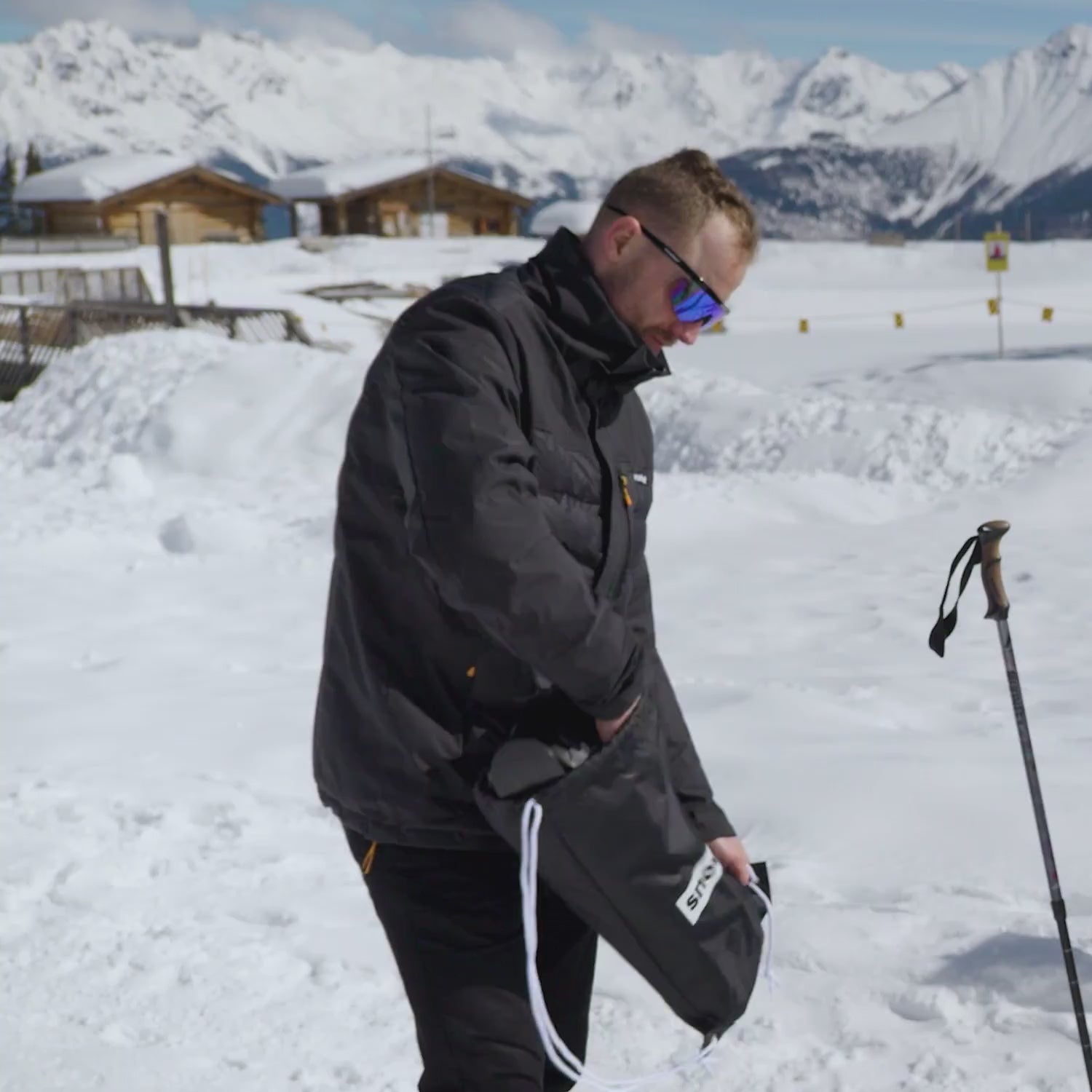
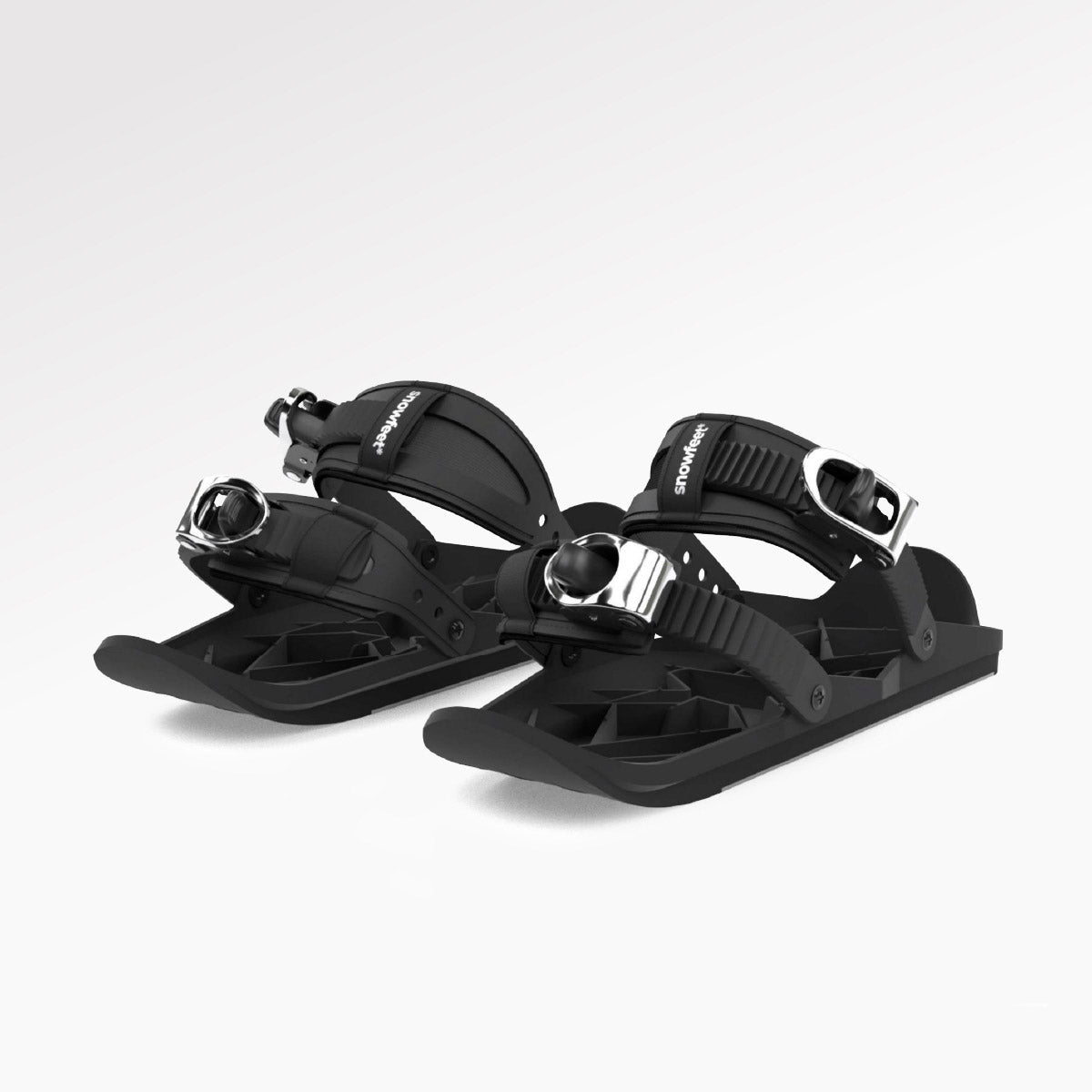
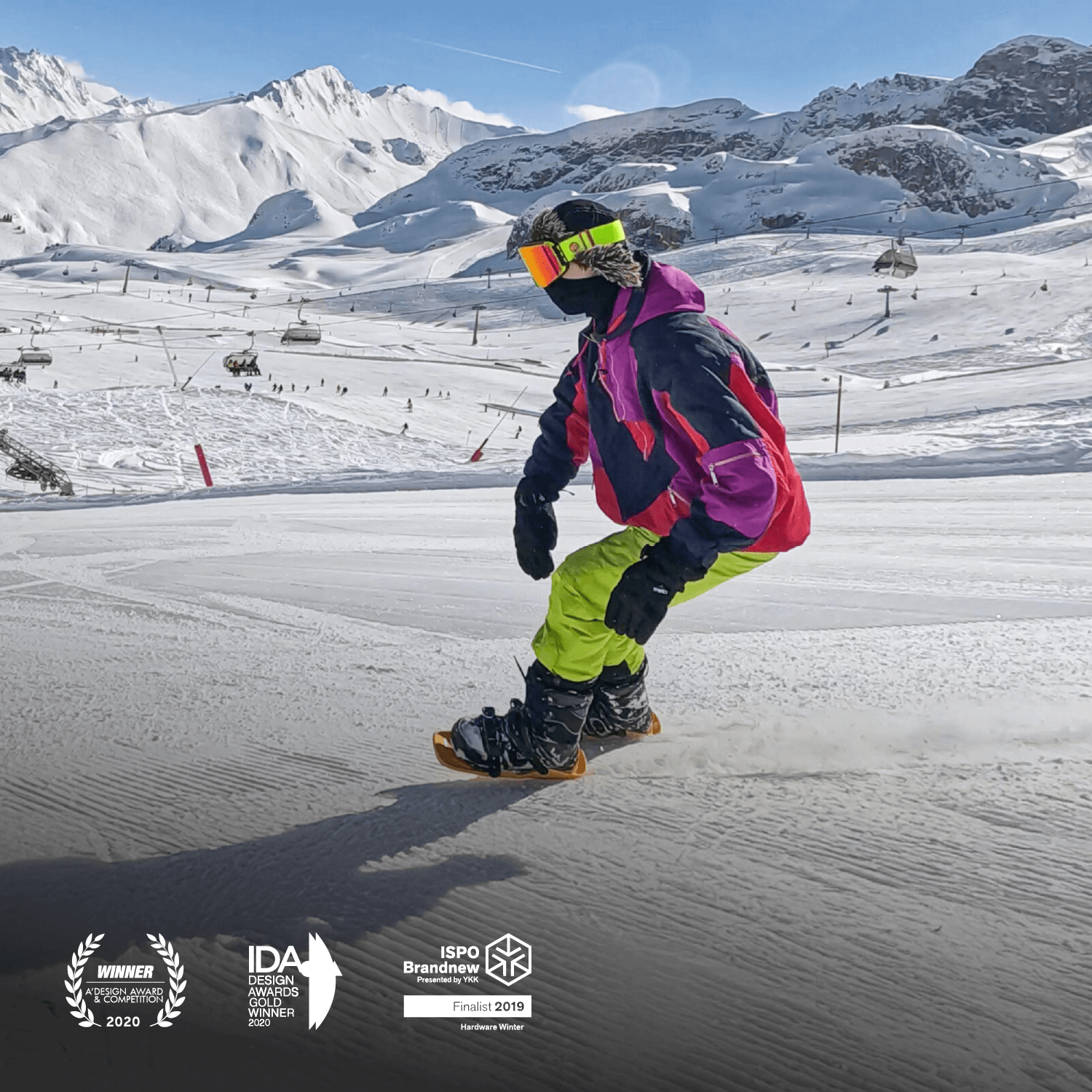

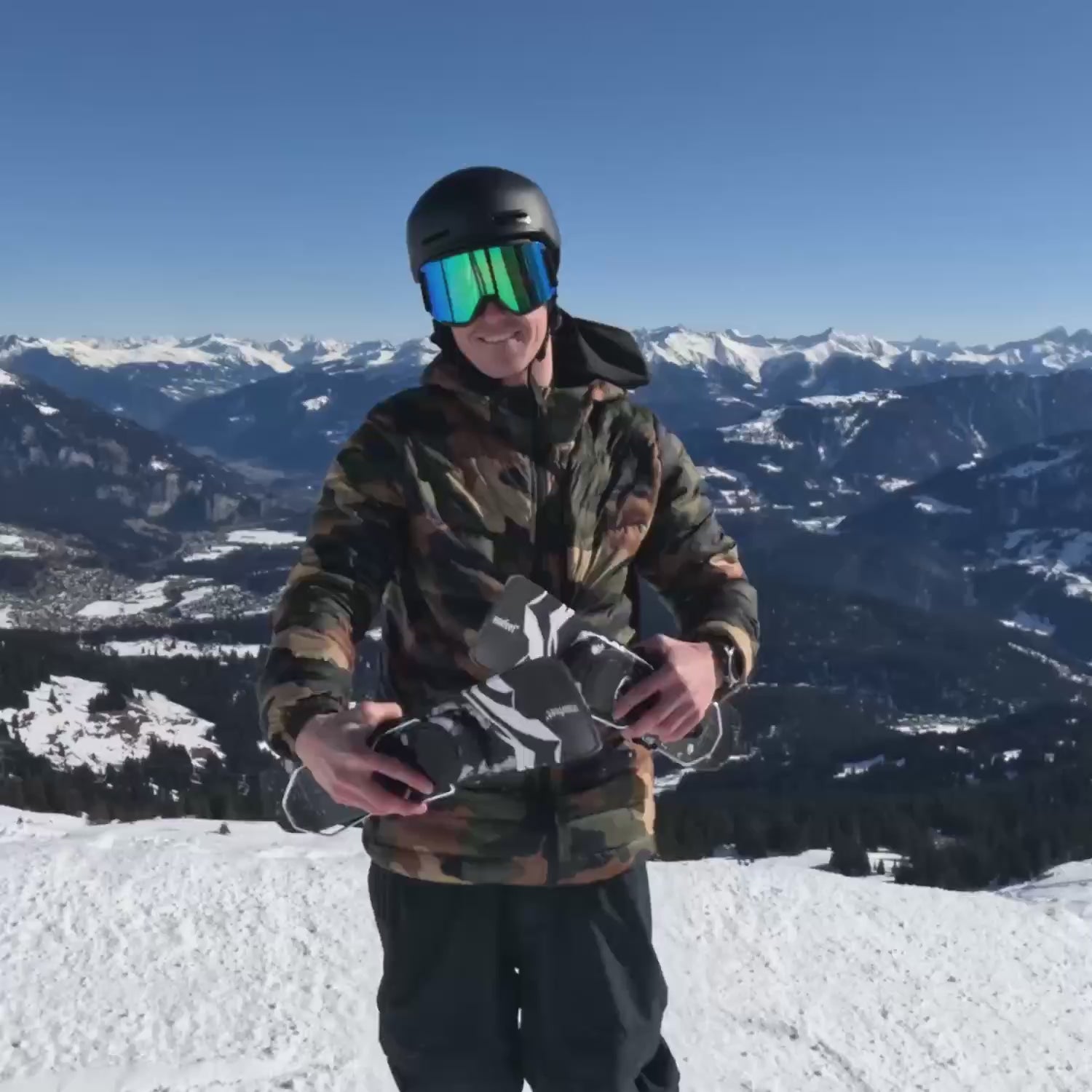
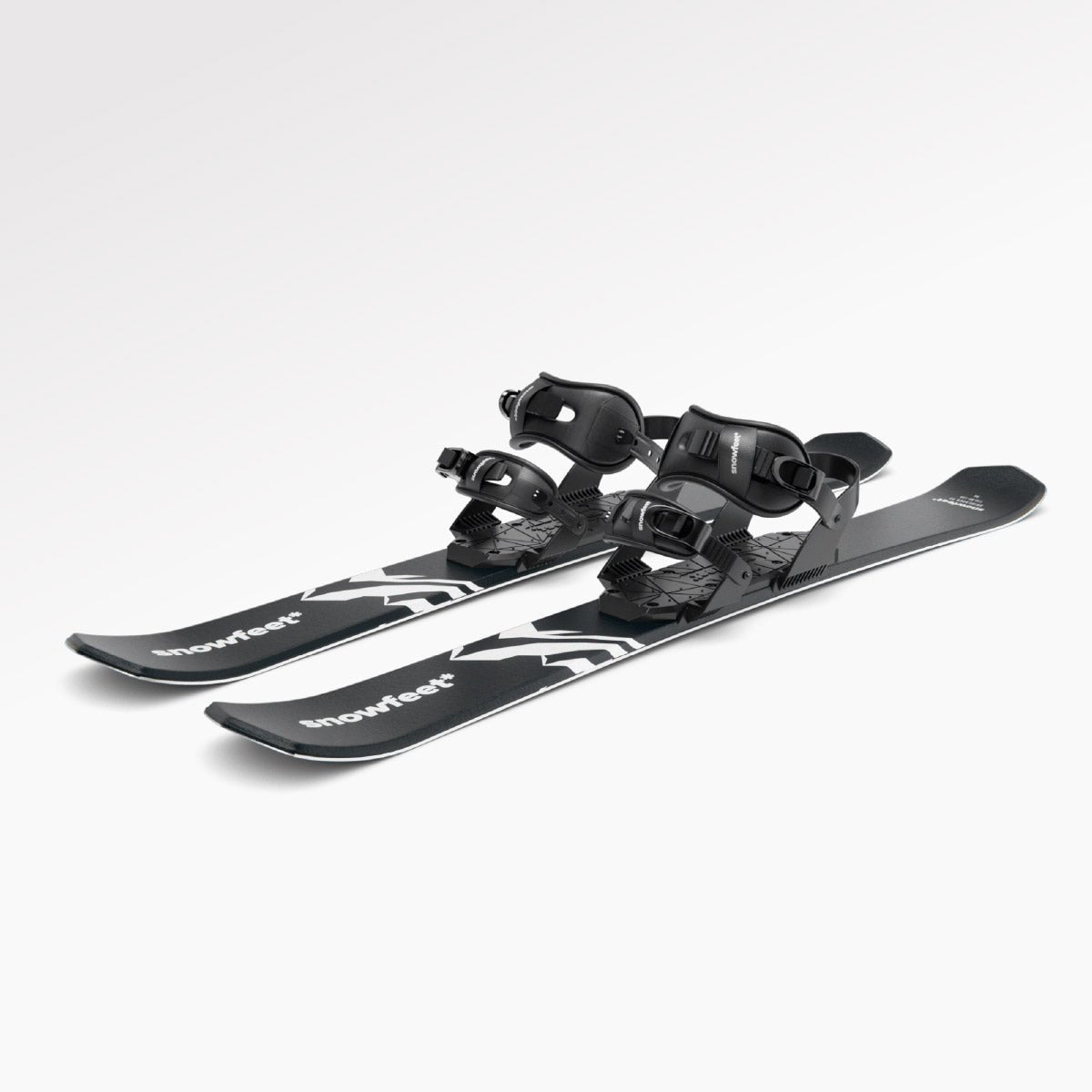
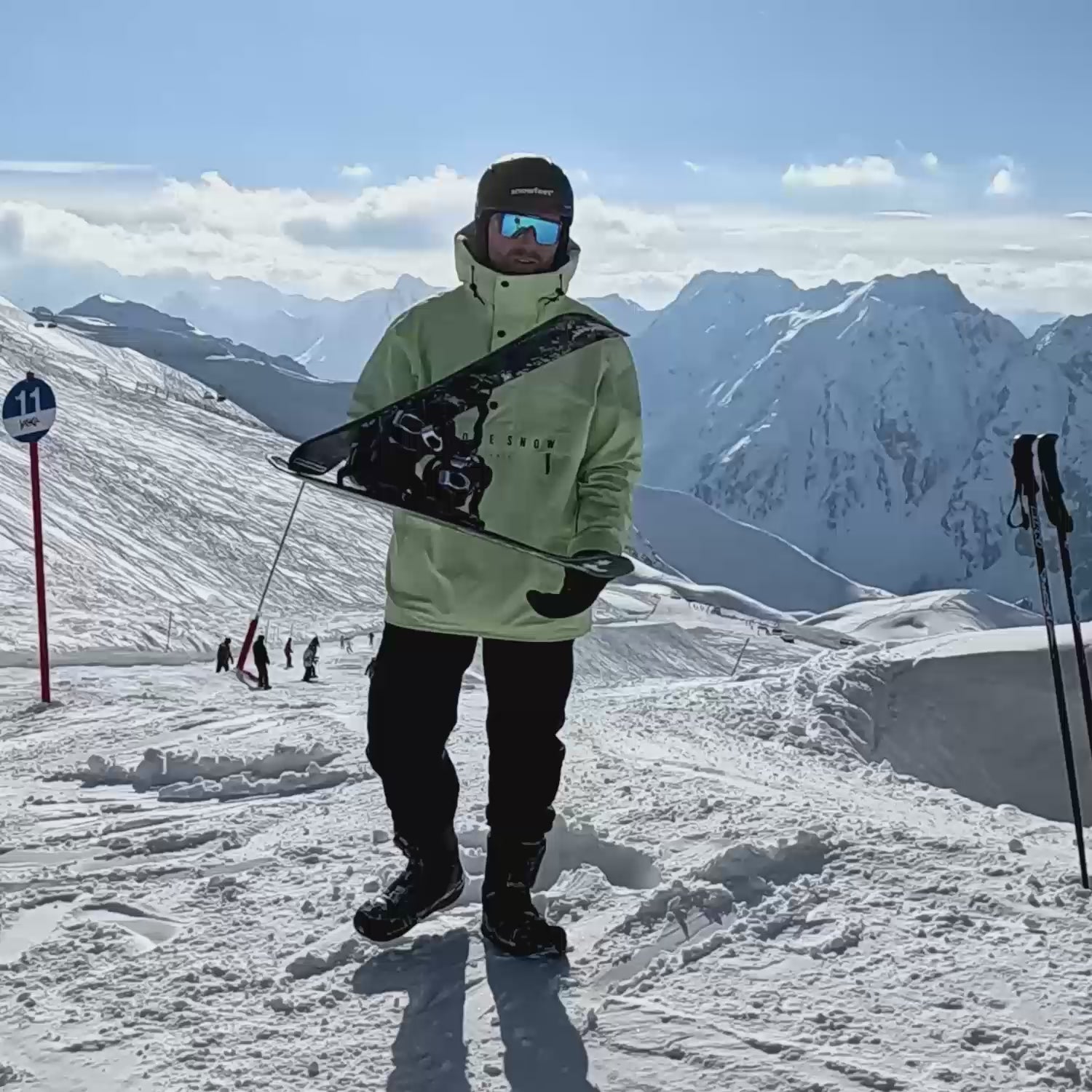
Lämna en kommentar
Denna webbplats är skyddad av hCaptcha och hCaptchas integritetspolicy . Användarvillkor gäller.